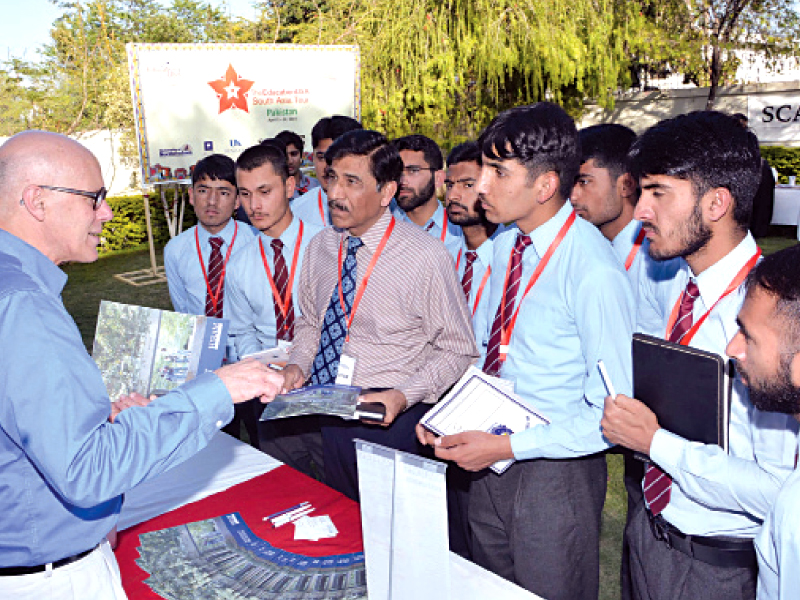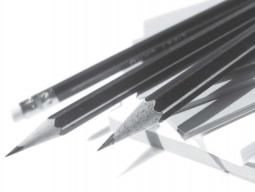
With sparkling eyes Shazima Hussain aspires to pursue higher education in interior design at Savannah College. The undergraduate student, who is majoring in the discipline at a local home economics college, believes the experience will lend her exposure and an opportunity to grow in the medium she is most passionate about.
She is one of many students who are exploring overseas education options available to them.
College applications can be a daunting process for students interested in seeking admissions abroad. While applicants can look up the relevant information online, college fairs put a human face to the interaction, enhancing the prospective students’ level of understanding.
In this connection, the fourth annual South Asia Tour was organised by the United States Educational Foundation in Pakistan (USEFP) and Education, in collaboration with the US State Department at the USEFP office on Friday.
Admission and recruitment representatives from various American universities interacted with local students and institutions regarding higher education opportunities in the US. This year’s delegation included representatives from New York University, Savannah College, Hiram College, University of Kentucky, Valparaiso University, Emporia State University and the University of Northern Iowa.
“You know the most popular major in the US? It’s called ‘Explore-It-All,’” remarked Mohinder “Holly” Singh, director of international students and scholars at Valparaiso University.
Singh, who has previously visited here as part of the tour, launched a summer programme for high school children. He has hosted over 100 high school students from Pakistan over the past three summers.
“I definitely feel that there is a lot of potential here, and I hope more and more Pakistani students come to study in the US -- not for their own sake, but for the sake of American students,” said Singh. “While I understand students’ interest in foreign education at America as it has the best schools, we know that they are the best because we are welcoming to international students,” he added.
Meanwhile, Judith Ravin from the American embassy stated that Pakistani students diversify American campuses.
In terms of the South Asian Diaspora, Pakistan ranks third in sending students to the US. Certain schools in the States tend to have a bigger alumni community from Pakistan than others.
Getting a US visa is one part of the application process many students fret about, said Will McCue, who deals with the US visa processes. For a student visa, the first prerequisite is acceptance into a US school. The F-1 visa is expressly for people going for degree programmes. The school will send them a form called I-20. The students have to then submit a fee and come in for an interview, where the visa officer will decide whether or not they are to be granted a student visa. The applicants get immediate feedback.
The Fulbright Programme, which is offered all over the world, has the largest network in Pakistan. “We welcome Pakistanis and Muslims to come to the US to study. I personally had Pakistanis in my college I was friends with, and that made college more fun for me,” he added.
Furthermore, he said the visa process is fairly simple and transparent, with each applicant being entertained individually.
Voicing a common dilemma of many young ambitious Pakistanis, a student wishing not to be named, said, “Education is expensive in the US and I cannot afford to pursue it without a scholarship, so I come to such fairs regularly with a hope to find that eureka moment.”
Published in The Express Tribune, April 12th, 2014.

































1714024018-0/ModiLara-(1)1714024018-0-270x192.webp)









COMMENTS
Comments are moderated and generally will be posted if they are on-topic and not abusive.
For more information, please see our Comments FAQ